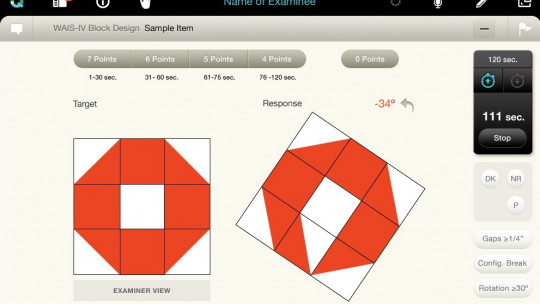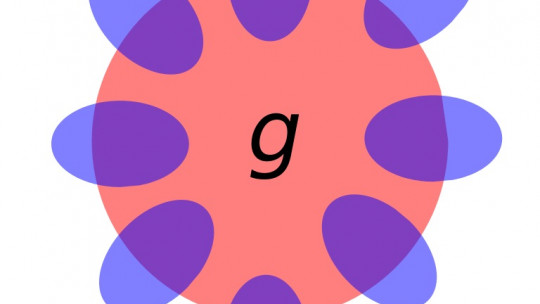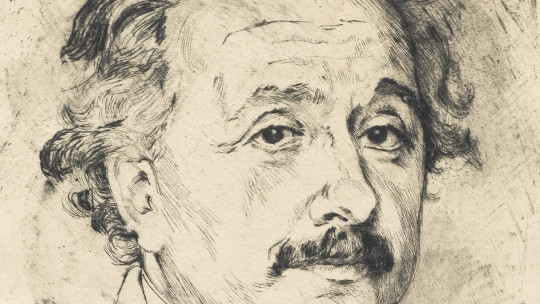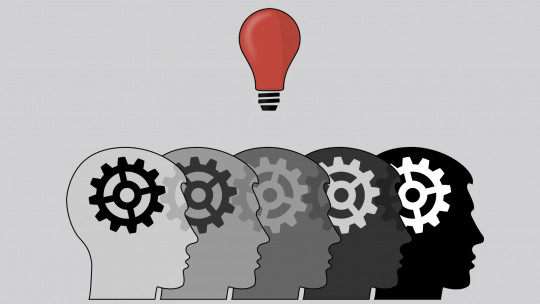
The study of intelligence is one of the topics that has aroused the most interest among psychologists, and was one of the reasons why the psychology began to become popular. Although currently the term intelligence It is a word that is used normally, this was not the case a little over a century ago.
The concept is too abstract and, in general, has provoked great debates among different experts It could be said that intelligence is the ability to choose, among several possibilities, the most appropriate option for solving a problem or for better adaptation to a situation. To do this, the intelligent individual makes decisions, reflects, examines, deduces, reviews, accumulates information and responds according to logic.
Some types of intelligence tests
There are different types of intelligence and the same goes for intelligence tests. Some measure what is known as “G Factor” and others measure different types of intelligence, such as logical-mathematical intelligence, spatial intelligence or linguistic intelligence.
Since this construct began to be studied, several theories have tried to explain it: Raymond Cattell’s crystallized and fluid intelligence, Spearman’s two-factor theory, Howard Gardner’s multiple intelligences, to name just a few of the most recognized.
The first intelligence test: Binet-Simon Test
The first intelligence test was developed by Alfred Binet (1857-1911) and by the psychiatrist Theodore Simon, both French. With this first intelligence test, the aim was to determine the intelligence of individuals who had intellectual deficits, compared to the rest of the population. The norm for these groups was called mental age. If the test score determined that the mental age was lower than the chronological age, this meant that there was mental retardation.
This test was reviewed and refined in several countries. Lewis Terman adapted it under the name of the Stanford-Binet test and used the concept of intelligence quotient (IQ) The average IQ in an age group is considered to be 100.
The different types of intelligence tests
There are different ways to classify intelligence tests, but normally these can be:
Acquired knowledge test
This type of tests They measure the degree of acquisition of knowledge in a certain area For example, at school they can be used in exam format to find out if students have learned enough in a subject. Another example may be an administrative skills test that is taken to qualify for a job.
However, the value of these tests when measuring intelligence is relative, because intelligence is usually understood as an ability rather than an accumulation of previously acquired knowledge.
Verbal Intelligence Test
In this type of tests the ability to understand, use and learn the language is evaluated Quick comprehension of texts, spelling and vocabulary richness are also evaluated. Accounting for the verbal skills necessary to communicate and live in a community, but also the way in which thoughts are organized through the structure of language.
Numerical Intelligence Test
These tests measure the ability to solve numerical questions In this type of tests, different items are presented: calculation, numerical series or arithmetic questions.
Logical Intelligence Test
This type of tests assesses logical reasoning ability Therefore, they test the person’s capacity for analysis and logic. This is the core of many intelligence tests, since it serves to evaluate the ability to perform abstract operations in which the correctness or incorrectness of the thought is both in their content and in the way in which they fit together and how They are formally related.
Types of intelligence tests: Individual vs. group
In addition to these types of tests, there are other tests that measure different types of intelligence, such as emotional intelligence.
On the other hand, tests are also usually classified according to their application: individual tests or group tests. Below are the best-known intelligence tests according to these types of tests.
Individual tests
Individual tests are presented to a single individual. These are the best known:
Stanford-Binet intelligence test
This test is a revision of the Binet-Simon test. It is mainly applied to children (ages 2 and up), although it can also be used in adults Children usually do it in 30-45 minutes, adults up to an hour and a half. This test has a strong verbal component and allows you to obtain an IQ in four areas or dimensions: verbal reasoning, numerical reasoning, visual reasoning and short-term memory, and a global IQ that is equivalent to the “G Factor”.
WAIS Test
The Wechsler Intelligence Scale for Adults allows obtaining the IQ, and also offers independently the manipulative IQ and the verbal IQ It contains 175 questions and, in addition, comics and series of digits. It consists of 15 subscales, and lasts 1 or 2 sessions of 90-120 minutes. It applies from 16 years of age.
WISCH test
The WISC was developed by the same author as the previous scale, David Wechsler, as an adaptation of the Wechsler Adult Intelligence Scale (WAIS), but, in this case, for children Like the previous one, it does not allow obtaining scores on three scales: verbal, manipulative and total. It is made up of 12 subscales.
Kaufman Assessment Battery for Children (K-ABC)
The Kaufman Assessment Battery for Children was designed with the purpose of evaluating the skills of children between 2 and a half years and 12 and a half years to solve problems that require simultaneous and sequential mental processing. In addition, it also measures acquired skills in reading and arithmetic. Tests can be administered in 35 to 85 minutes.
Raven’s test
Its purpose is to measure IQ. It is a non-verbal test, where the subject must describe missing pieces of a series of printed sheets, and to do so must use perceptual, observation and analogical reasoning skills to deduct the missing pieces. It is applied to children, adolescents and adults.
Woodcock-Johnson III Tests of Cognitive Abilities (WJ III)
This test consists of two batteries that measure general intelligence, specific cognitive abilities, and academic achievement They have a wide age range, as they can be used for all ages from two years old. The test consists of a standard battery to evaluate 6 areas, and 14 additional evaluation areas are observed when the expanded battery is applied.
Group intelligence test
Group intelligence tests were born thanks to the contribution of Arthur Otis, a student at Stanford University and student of Lewis Terman. The latter taught a course on the Stanford-Binet Intelligence Scale at the same university. Otis had the idea of adapting this test to a collective test format and, later, this test became the Army Alpha Exam, for military selection and position classification.
After the Alpha Exam, other tests of collective application have emerged. These are some of the best known:
Otis-Lennon Scholastic Ability Test (OLSAT)
This test consists of various image, verbal, figure and quantitative reagents, which They allow measuring verbal comprehension, verbal reasoning, image reasoning, figure reasoning and quantitative reasoning It is applied to children from school to 12th grade. This test has two forms and seven levels, each one can be administered in 60-75 minutes.
Cognitive Abilities Test (CogAT)
This test measures children’s ability to reason and solve problems using verbal symbols, quantitative and spatial. The test consists of different levels, 3 batteries (verbal, quantitative and non-verbal) and its administration lasts about 90 minutes.
Wonderlic Personal Test
This test consists of 50 items consisting of analogies, definitions, logic problems and arithmetic, spatial relationships, comparisons between words and direction placement. It is a tool widely used in personnel selection processes in the workplace. Its application is brief: 12 minutes.







